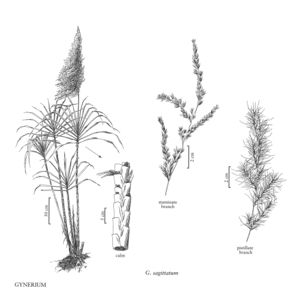Difference between revisions of "Gynerium sagittatum"
FNA>Volume Importer |
imported>Volume Importer |
||
| Line 4: | Line 4: | ||
|publications= | |publications= | ||
|common_names=Wildcane | |common_names=Wildcane | ||
| + | |special_status={{Treatment/ID/Special_status | ||
| + | |code=I | ||
| + | |label=Introduced | ||
| + | }} | ||
|basionyms= | |basionyms= | ||
|synonyms= | |synonyms= | ||
| Line 38: | Line 42: | ||
|publication title= | |publication title= | ||
|publication year= | |publication year= | ||
| − | |special status= | + | |special status=Introduced |
| − | |source xml=https:// | + | |source xml=https://bibilujan@bitbucket.org/aafc-mbb/fna-data-curation.git/src/bb6b7e3a7de7d3b7888a1ad48c7fd8f5c722d8d6/coarse_grained_fna_xml/V25/V25_574.xml |
|subfamily=Poaceae subfam. Panicoideae | |subfamily=Poaceae subfam. Panicoideae | ||
|tribe=Poaceae tribe Gynerieae | |tribe=Poaceae tribe Gynerieae | ||
Revision as of 23:04, 27 May 2020
Culms 2-10(15) m tall, 1-4 cm thick. Sheaths distichous, narrowing toward the apices, sometimes with a line of deciduous hairs on the back below the articulation with the blade; ligules 0.5-2 mm; blades long-attenuate, (0.4)1.5-2 m long, 2-10 cm wide, in a flat, fan-shaped arrangement, margins serrate. Panicles 0.5-1.5(2) m. Pistillate spikelets 8-11 mm; lower glumes 2.5-4 mm, lanceolate, 1(3)-veined; upper glumes 7-11 mm, linear-subulate, curved when mature, 3-veined; lemmas 4.5-7 mm; paleas 1-2 mm, lanceolate. Staminate spikelets 3-4 mm; glumes (1.5)2-3 mm, hyaline, acute; lemmas 3-4 mm, lanceolate, acute to acuminate; paleas to 2.5 mm, hyaline; anthers 1.5-2 mm, purplish. 2n = 44.
Discussion
Gynerium sagittatum is grown as an ornamental in subtropical portions of the Flora region. Even when vegetative, it can be identified by its height, the absence of blades on the lower leaves, the strongly distichous, fan-shaped arrangement of the distal leaf blades, and the wide midveins of the blades. It does not flower when grown outdoors in the Flora region.
Selected References
None.
